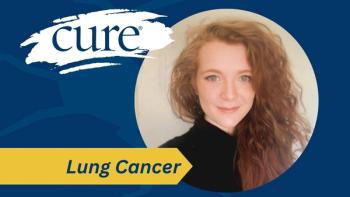
- Summer 2014
- Volume 13
- Issue 2
Support for Chemotherapy-Induced Peripheral Neuropathy
Support groups help neuropathy sufferers find new treatments and fellow survivors.
After being told there was nothing to be done but live with her neuropathy, retired nurse Linda McIntosh began searching for a drug that would help her endure the pain in her hands and feet. She took duloextine until she hit the doughnut hole, the payment gap in Medicare, and could no longer afford the drug. Now she takes gabapentin.
She also called the Neuropathy Association (
“People want to know that there are others who understand what they are going through and maybe have suggestions on what to do to relieve some of the symptoms,” she says. In addition, not everything works for everyone, so participants can discuss what is working and what isn’t.
“I stress upon them to share the information with their physicians, because it might affect their other medicine,” she adds.
Cindy Tofthagen, an assistant professor at University of South Florida College of Nursing, also facilitates a support group in the Tampa, Fla., area after she saw many people who needed help adjusting and finding information about their neuropathy.
“The support group is instrumental in helping people learn how to manage the pain and other symptoms at home,” she says, adding that balance and pain are two big issues for many in the group whose neuropathy comes from numerous causes, including CIPN and diabetes.
People want to know that there are others who understand what they are going through and maybe have suggestions on what to do to relieve some of the symptoms
“We have a free multidisciplinary clinic that meets on a quarterly basis with a physical therapist, occupational therapist and nurse practitioners, in addition to a podiatrist,” she says. Attendees meet with providers and learn about foot care, home safety, coping and exercises to improve their strength and balance.
“All providers donate their time, so it is free to patients,” Tofthagen says. The occupational therapist can help participants obtain assistive devices, such as a cane or a walker or a hand control for their car.
Tofthagen says the clinic does not provide medical treatment but offers education and support to supplement the information patients receive from their healthcare providers. She emphasizes that patients should see a neurologist to help identify the underlying cause of their neuropathy.
At the clinic, participants have two hours to visit with providers, so they feel that they have been heard. She encourages anyone coping with neuropathy to visit The Neuropathy Association’s website to find a local support group—or to consider starting one with the association’s help.
“We allow people to participate in the support group via Skype; they can take part even when they can’t leave home,” she says, adding that more attention needs to be paid to this underdiagnosed and underaddressed problem. “They look normal on the outside, and no one knows they are going through such a struggle.”
Articles in this issue
over 11 years ago
New Guidelines Recommend Genetic Testing for Lynch Syndromeover 11 years ago
National Women's Survivors Conventionover 11 years ago
Ruling Grants Patients Direct Access to Lab Resultsover 11 years ago
A Spice for Lifeover 11 years ago
Group Launches Global Initiative to Support Cancer Researchover 11 years ago
Chemo Brain Doc Notes Appover 11 years ago
Survivorship Issues Can't Be Ignoredover 11 years ago
Bone Basicsover 11 years ago
Assessing the Risk



